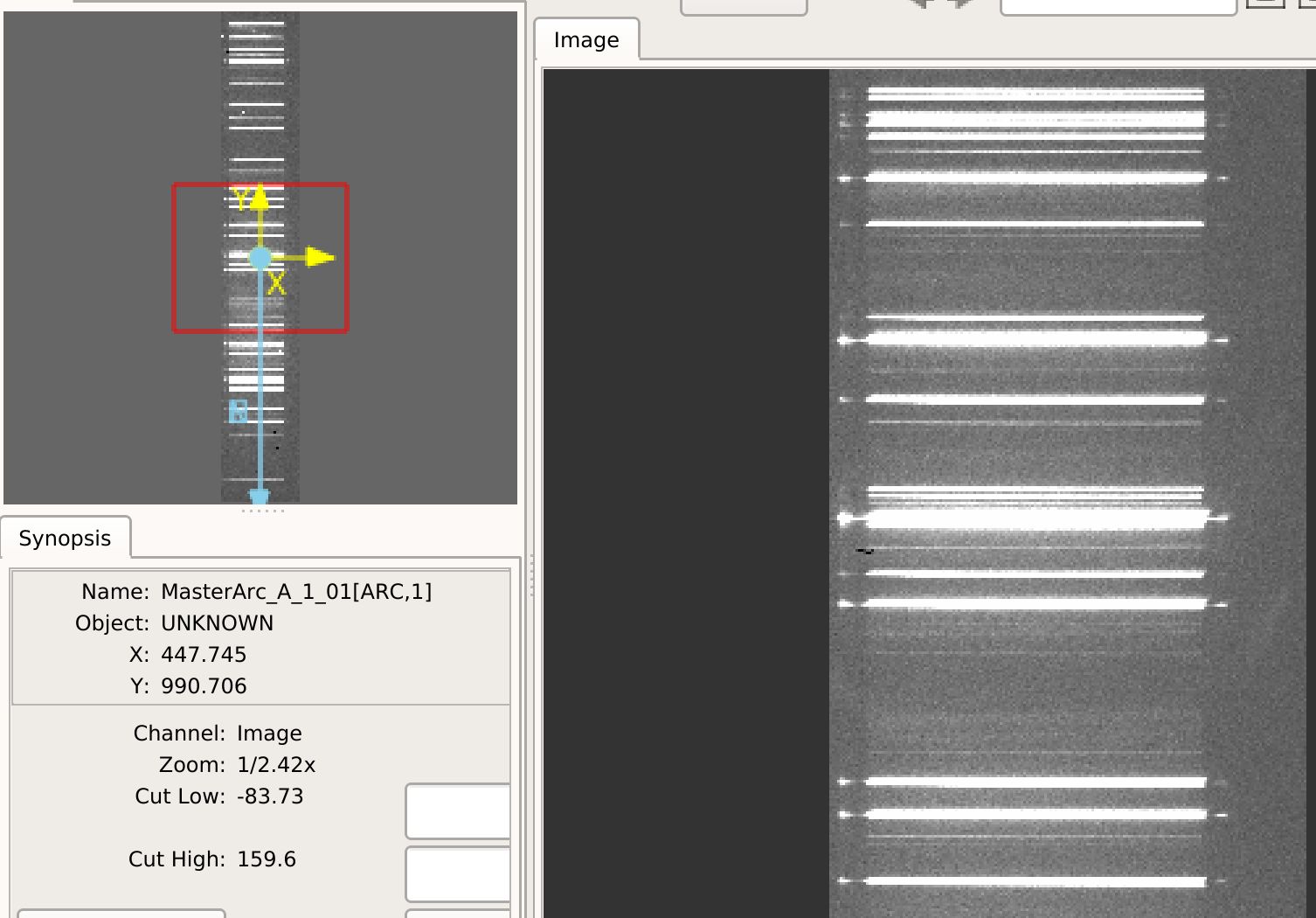Tiltimg
Overview
This file describes the data model for the Tiltimg image.
For optical spectrographs, it is typically
the combination of all input arc frames.
For near-IR spectrographs, it is likely
one or more science frames.
The image is written to disk as a multi-extension FITS file
prefixed by Tiltimg in the Calibrations/ folder.
See Calibration Frame Naming for the naming convention.
Inspecting
The first extension is the combined image. You can view it with any standard image viewer, e.g.:
ginga Calibrations/Tiltimg_A_1_01.fits
Most often you use only one tilt frame and this appears very similar to the raw image. If you do stack several, the output could be quite different.
The image will also be a trimmed portion of the raw image and also re-oriented so that vertical is the spectral dimension with blue at the bottom.
Here is an screen shot of a ginga view
for an example from the shane_kast_red spectrograph.

Actually, I cheated. This is an Arc image. But, they are identical for this instrument.
Troubleshooting
If your image appears to be in err, here are the things to consider:
Is one or more of your input tilt frames junk?
Is one or more of your input tilt frames mis-labeled?
Current TiltImage Data Model
Internally, the image is held in
pypeit.images.buildimage.tiltimage.TiltImage
which subclasses from pypeit.images.pypeitimage.PypeItImage and
pypeit.datamodel.DataContainer.
The datamodel written to disk is:
Version 1.3.0
HDU Name |
HDU Type |
Data Type |
Description |
|---|---|---|---|
|
… |
Empty data HDU. Contains basic header information. |
|
|
floating |
Primary image data |
|
|
Image mask |
||
|
The detector (see |